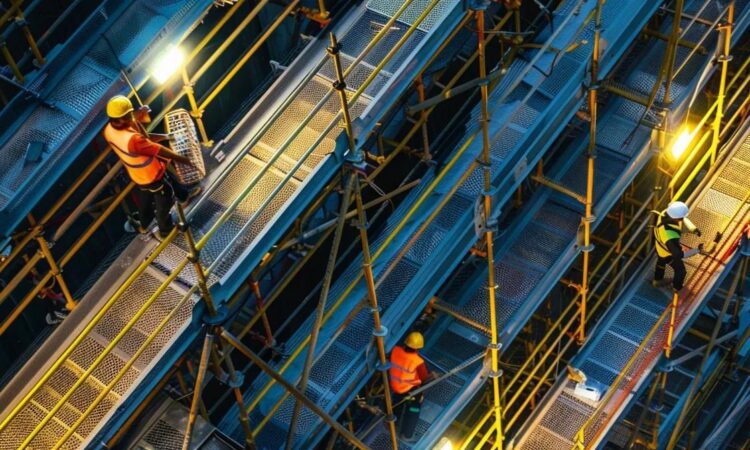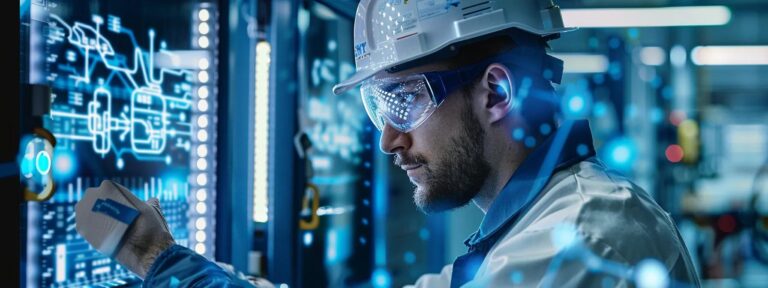From Engineering to Execution: How to Install and Fabricate Fall Protection Systems That Work
Fall protection systems — including guardrail systems, lifeline systems, and ladder systems — are engineered solutions designed to safeguard workers from potential falls and related injuries. They combine design, fabrication, design installation, and annual-maintenance to ensure that personnel are protected when working at heights or in hazardous environments. at us fall protection, we invite you to explore our industries-we-serve and about us pages as well as our blog, and if you’re interested, you can always get a free quote for more details.
What Is a Fall Protection System and Why Is It Essential?
A fall protection system is a comprehensive assembly of devices, components, and procedures designed to prevent or arrest falls in the workplace. It minimizes injury risks, reduces downtime, and ensures regulatory compliance—qualities highly valued by industries-we-serve, including us fall protection. These systems are critical in industries where employees work at elevated heights or near hazardous edges, and where ladder systems are frequently employed, protecting both lives and equipment. In fact, guardrail systems and lifeline systems are among the vital elements engineered for maximum safety. Key elements include guardrails, lifelines, harnesses, and anchorage points that combine to create a safe work environment. To further secure your site, many providers offer design installation and annual-maintenance services so you can get a free quote and check our blog for additional insights.
What Are the Key Components of Fall Protection Systems?
The main components include: – Guardrails: Provide physical barriers to prevent falls. These are a key part of our guardrail systems that ensure worker safety. – Lifelines and Anchor Points: Secure workers to stationary structures, forming the backbone of many lifeline systems. – Harnesses: Distribute impact forces during fall arrest, making proper design installation critical for effective performance. – PPE: Supplement protective measures provided by us fall protection. – Ladder systems: Enhance safe access to elevated work areas by offering secure climbing alternatives.
Each component is engineered to rigorous standards; for instance, lifelines have defined tensile strengths and harnesses are designed for even force distribution. To maintain these high safety standards, regular annual-maintenance is recommended. For more details, get a free quote today.
Learn more about us and explore our industries-we-serve by visiting our blog for safety tips and updates.
How Do Fall Protection Systems Improve Worker Safety?
These systems offer multiple layers of defense, incorporating guardrail systems and ladder systems to further enhance the primary barrier (guardrails) which prevents access to hazards. In cases where more specialized support is required, lifeline systems are integrated as part of the design installation process. Secondary systems like personal fall arrest systems (PFAS, us fall protection) activate if a fall occurs, reducing impact. Regular inspections, annual-maintenance, and adherence to OSHA and ANSI standards ensure ongoing reliability and improve overall worker morale by signaling an organizational commitment to safety. For additional information about us and the industries-we-serve, visit our blog or get a free quote.
Which Industries Require Customized Fall Protection Solutions?
Industries such as construction, manufacturing, utilities, oil and gas, and wind energy (industries-we-serve) require customized systems due to unique job site conditions. Construction sites may need temporary, adaptable systems, while manufacturing often benefits from fixed installations supported by a reliable design installation process. Customized solutions, including guardrail systems, ladder systems, and lifeline systems, are increasingly preferred in specialized fields like tower maintenance and bridge construction, where standard systems may not suit specific spatial or environmental challenges. Furthermore, many clients opt for annual-maintenance checks to ensure system longevity, and for those looking for tailored solutions, get a free quote for customized installations. To learn more about us and our expertise, visit our blog for industry insights.
How Does Fall Protection Engineering Ensure System Effectiveness?
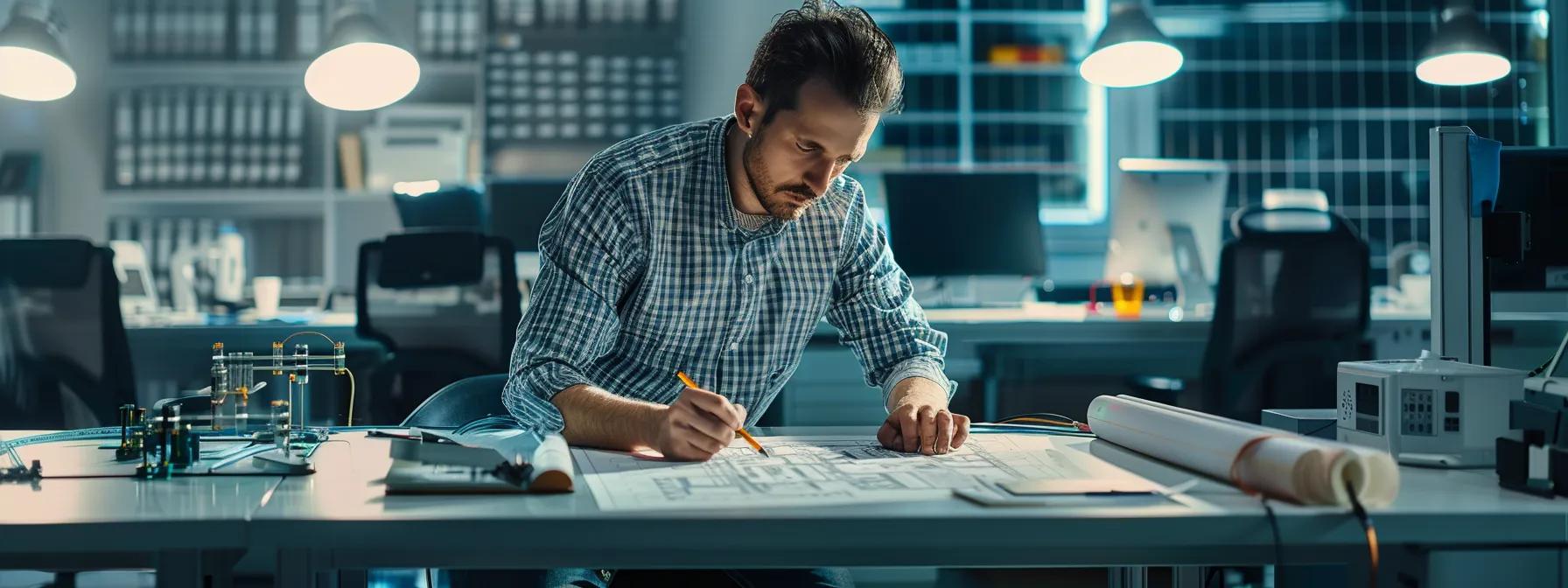
Engineers ensure system effectiveness by combining design principles with rigorous testing and regulatory compliance (supported by industries-we-serve), incorporating design installation methods to streamline operations. They calculate load-bearing capacities, select proper materials, and integrate multiple safety redundancies such as ladder systems, guardrail systems, and annual-maintenance practices alongside lifeline systems so that systems perform reliably under worst-case scenarios. For further details, interested parties can get a free quote on our advanced protection solutions.
What Steps Are Involved in Fall Protection System Design?
The design process includes: – Hazard Risk Assessment: Identify fall hazards in the work environment and evaluate ladder systems to ensure safe access. – System Conceptualization and Component Selection: Draft preliminary designs specifying lifelines (lifeline systems), anchor points, and harnesses, which are crucial for effective design installation. – Prototype Testing: Use CAD simulations and physical tests to verify performance before final fabrication and installation. Subsequent annual-maintenance reviews help ensure that every design element is tested under stress conditions.
How Are Engineering Calculations Used to Guarantee Safety?
Precise engineering calculations determine load limits, impact forces, and redundancies. By using factors like material properties, working load limits (WWL), and safety factors, engineers design components such as anchorage points, ladder systems, guardrail systems, and lifeline systems to support forces several times higher than expected loads, providing a significant safety margin in compliance with OSHA, ANSI, and other standards.
Additionally, us fall protection experts emphasize design installation and annual-maintenance protocols to ensure ongoing safety and reliability.
How Does Apex Ensure Compliance With OSHA and ANSI Standards?
Apex adheres to these standards through proven engineering practices, formal verification, and continuous training as part of our industries-we-serve approach. They maintain up-to-date knowledge of regulatory changes and implement quality control procedures from design installation to installation. Regular audits, material certifications, annual-maintenance, and thorough system testing provide a documented trail of compliance for regulatory inspections. For more details, get a free quote.
What Are the Best Practices for Fabricating Custom Fall Protection Systems?
Fabrication best practices include using high-quality materials, adhering to precise engineering specifications, and following strict protocols to ensure durability and reliability of each component. Our design installation approach integrates ladder systems and guardrail systems to enhance safety, while a well-planned annual-maintenance schedule helps sustain performance over time.
How Are Guardrails, Lifelines, and Anchor Points Fabricated?
These components, integral to industries-we-serve applications, are produced using industrial-grade metals like stainless and high-tensile steel. Techniques such as plasma cutting, welding, and design installation ensure precision. Quality assurance measures including nondestructive testing (NDT) and annual-maintenance checks detect imperfections and guarantee that components will handle the required loads.
What Materials Are Most Suitable for Durable Fall Protection Components?
Suitable materials include: – Stainless Steel: for its corrosion resistance and durability in outdoor conditions, making it ideal for ladder systems and us fall protection applications. – High-Strength Carbon Steel: often used indoors for its cost efficiency and is recommended for annual-maintenance routines. – Composite Materials: employed when weight reduction is critical and commonly used in guardrail systems. Our industries-we-serve benefit from comprehensive design installation strategies. Material selection is based on a cost-benefit analysis and environmental assessments specific to each workplace. For more insights, visit our blog or get a free quote.
How Does Fabrication Align With Safety and Compliance Standards?
Fabrication adheres to safety standards by following protocols set by OSHA, ANSI, and ISO, integrating us fall protection measures to enhance worker safety. All components are manufactured under controlled conditions with routine inspections, calibrated equipment, and detailed documentation to ensure each batch meets required performance specifications while also employing annual-maintenance checks and guardrail systems for added security.
How Is a Fall Protection System Professionally Installed?
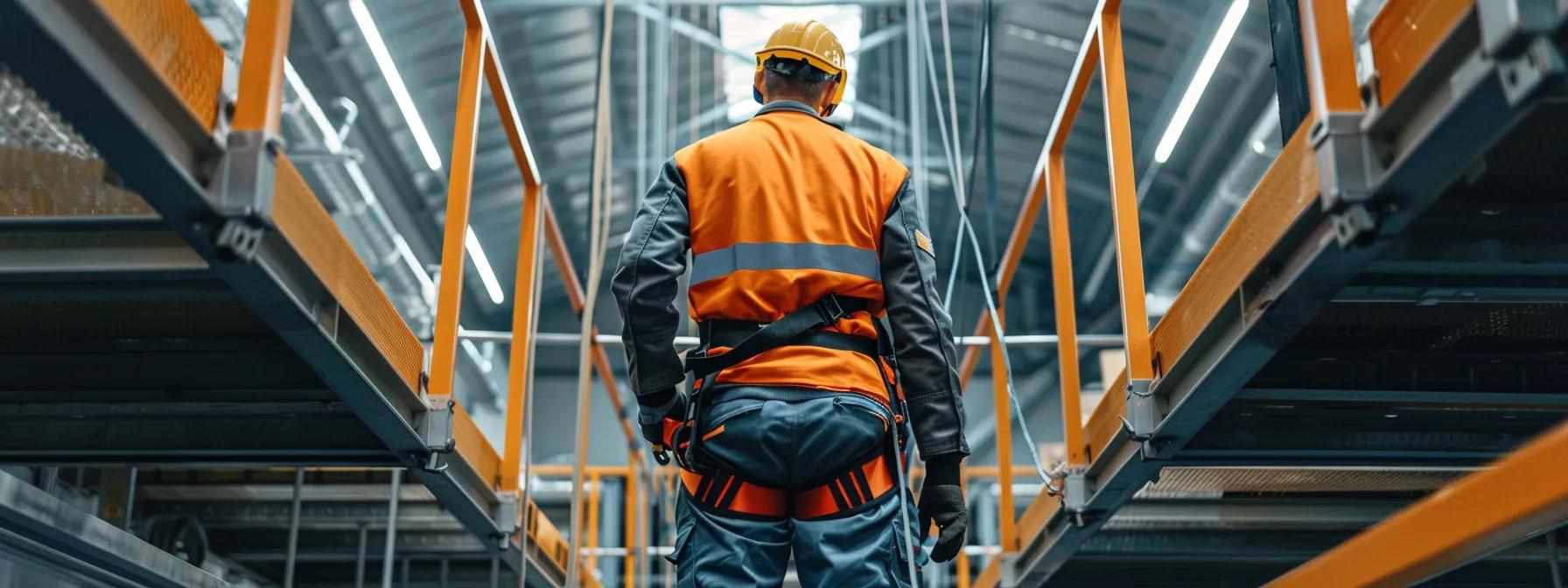
Professional installation ensures that every component is integrated correctly and tested for long-term reliability. Our design installation process incorporates key elements such as ladder systems, guardrail systems, and us fall protection to guarantee that each component meets strict safety standards. This phase transforms engineering designs into safe, functioning systems on-site.
What Are the Key Steps in Fall Protection System Installation?
Installation begins with: – Site Assessment and Planning: Checking structural integrity and locating anchorage points. This stage is integral to the design installation process, ensuring that us fall protection requirements are met. – Transport, Assembly, and Attachment: Components, including ladder systems and guardrail systems, are securely installed according to approved engineering plans. – Load Testing and Inspection: The system is thoroughly tested to confirm that all safety parameters are met and to schedule appropriate annual-maintenance checks. These steps guarantee a proper and secure installation that meets all design specifications.
What Safety Procedures Must Be Followed During Installation?
During installation (design installation), workers must use PPE, adhere to lockout/tagout protocols, and employ fall arrest systems enhanced by us fall protection guidelines. Supervision by a certified safety officer and securing the site against unauthorized access are critical, especially when incorporating ladder systems into the overall safety setup. Emergency response plans are also in place to address any accidents during the process.
How Does Installation Ensure Long-Term System Reliability?
Installation is verified through rigorous testing and periodic inspections, incorporating design installation protocols for enhanced accuracy. Detailed documentation such as photographs, test results, and certification records is maintained for future reference, ensuring that the system remains reliable throughout its lifecycle and supporting annual-maintenance schedules that meet industries-we-serve standards.
How Often Should Fall Protection Systems Be Inspected and Maintained?
Regular inspections and maintenance schedules are essential to keep fall protection systems operational. Routine checks help identify wear and damage before any compromise occurs.
What Does a Comprehensive Fall Protection System Inspection Include?
Inspections involve a visual and functional check of all components—guardrails (guardrail systems), lifelines (lifeline systems), anchor points, and PPE. Engineers look for signs of corrosion, physical damage, and compromised welds or fasteners. Detailed notes and photographs, along with metrics like load-bearing tests, are recorded to monitor system integrity over time, forming part of an ongoing annual-maintenance review.
How Are Maintenance and Repairs Conducted to Extend System Life?
Maintenance follows manufacturer guidelines, engineering best practices, and annual-maintenance protocols. Common tasks include cleaning, lubricating moving parts such as ladder systems, tightening fasteners, and replacing worn components. When repairs are needed, certified technicians use approved materials and follow documented procedures to ensure the system continues to meet safety standards, incorporating us fall protection measures. Regular recalibration and performance testing further enhance system longevity, especially for lifeline systems.
What Is the Recertification Process for Fall Protection Systems?
Recertification is a formal review wherein the entire system is reexamined against current regulatory standards. This process combines physical inspections with a review of all maintenance and repair records as part of our annual-maintenance program. Independent certified inspectors, specializing in ladder systems and us fall protection, provide an unbiased assessment, ensuring systems are either recertified for continued use or modified as required.
What Industry-Specific Fall Protection Solutions Are Available?
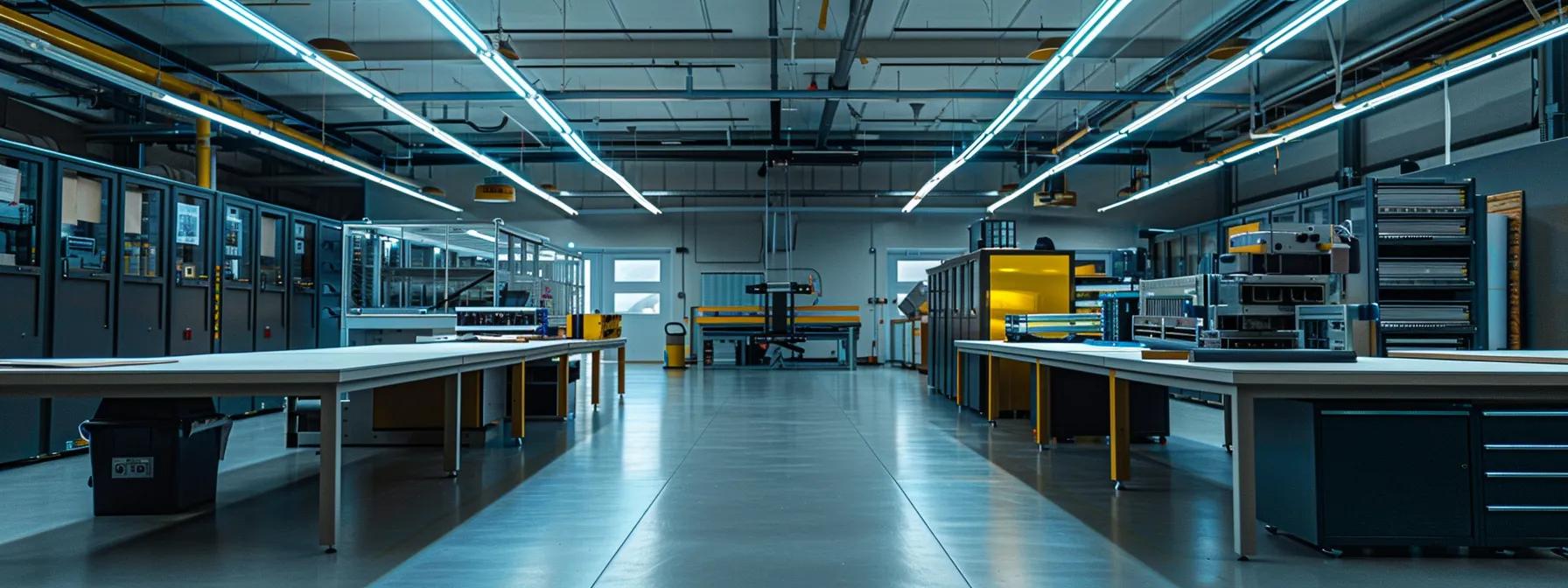
Customized fall protection solutions address the unique risks and environmental challenges of different sectors, enhancing performance and regulatory compliance.
How Is Fall Protection Customized for the Construction Industry?
In construction, industries-we-serve projects are tailored with mobile guardrails and adjustable lifelines complemented by lifeline systems, and adaptable anchorage systems for rapidly changing job sites. Engineering calculations guide material selection and connection design with design installation best practices, ensuring that heavy loads can be safely supported even with fluctuating conditions. Training programs specific to construction, including ladder systems integration and us fall protection education, further improve safe usage.
What Are the Unique Fall Protection Needs in Manufacturing?
Manufacturing environments (industries-we-serve) often combine fixed installations (design installation) with portable solutions. Elevated platforms and mezzanines require permanent guardrails and anchorage points, enhanced by robust guardrail systems, while supplemental fall arrest systems are used for maintenance. Systems in manufacturing are designed with us fall protection in mind to withstand constant operation and challenging conditions like welding fumes or high temperatures, with durability and chemical resistance as key design factors.
How Does Fall Protection Address Utilities Industry Risks?
For the utilities sector, our industries-we-serve approach ensures that systems are designed to handle variable weather conditions, electrical hazards, and extensive work areas. High-visibility materials, robust anchorage points, and flexible lifelines working alongside lifeline systems are used to protect workers during tasks such as tower maintenance, annual-maintenance routines, and power line inspections. Both active (personal fall arrest) and passive measures, including guardrail systems, are combined to meet the harsh outdoor demands.
How Can You Choose the Right Fall Protection System for Your Site?
Selecting the appropriate fall protection system, such as guardrail systems and lifeline systems, involves evaluating workplace hazards, operational needs, and regulatory requirements. A tailored design installation that considers ladder systems not only meets safety standards but also fits seamlessly within the specific work environment.
What Factors Should Be Considered When Selecting a Fall Protection System?
Key factors include: – Work Area Height (ladder systems) – Environmental Conditions– Type of Work and Specific Hazards (guardrail systems) Additional considerations are ease of installation, annual-maintenance, regulatory compliance (OSHA, ANSI), and budget constraints. Comprehensive risk assessments ensure that the chosen system, whether fixed or portable, provides maximum protection and efficiency, including lifeline systems tailored to specific industry needs.
How Does Apex Safety Solutions Provide Turnkey Fall Protection Services?
Apex Safety Solutions manages every aspect—from engineering design and fabrication to professional installation and maintenance, incorporating design installation best practices to enhance efficiency. Their approach includes detailed risk assessments developed for industries-we-serve, custom system design, precise fabrication using high-quality materials, and certified installation that meets industry standards with us fall protection measures. Regular inspections, annual-maintenance checks, and recertification services keep each system compliant and effective over time. For additional insights, visit our blog and get a free quote today.
When Should You Contact Experts for Engineering, Fabrication, and Installation?
Expert consultation is crucial when dealing with complex or high-risk work conditions that require customized solutions such as integrating ladder systems to enhance overall safety. Early involvement during planning and design—coupled with strategic design installation practices—ensures seamless integration and adaptability to changes in work scope or site layout, while regular annual-maintenance checks can help sustain performance over time. Professionals provide valuable insights that minimize risks and bolster overall system reliability, often advising the installation of guardrail systems to protect workers in hazardous areas.
Table: Summary of Fall Protection System Components and Their Functions
Below is a table summarizing key components of fall protection systems, their functions, and associated benefits:
| Component | Function | Benefit | Compliance Standard |
|---|---|---|---|
| Guardrails | Physical barriers to prevent falls | Immediate fall prevention | OSHA / ANSI |
| Lifelines | Secure anchorage to arrest falls | Reliable fall arrest with controlled deceleration | ISO / ANSI |
| Anchor Points | Fixed connection points for harnesses and lifelines | Load distribution and enhanced system integrity | OSHA / ANSI |
| Harnesses | Wearable equipment for fall arrest | Evenly distributes impact forces | OSHA / ANSI |
| Personal Protective Equipment (PPE) | Supplementary equipment for individual safety | Enhances overall safety when used properly | NIOSH / OSHA |
Before this table, note that each component plays a distinct role in ensuring overall system integrity through design installation best practices. After the table, the integrated use of these components—including guardrail systems and us fall protection measures—provides multiple layers of defense to enhance worker safety and regulatory compliance.
Frequently Asked Questions
Q: What makes fall protection systems different from basic safety nets?
A: Fall protection systems combine passive and active components engineered through precise calculations and strict material specifications, offering a primary defense as well as secondary protection unlike basic safety nets. For optimum performance, many facilities opt for a reliable design installation along with scheduled annual-maintenance. Additionally, integrating guardrail systems and lifeline systems reinforces their overall us fall protection approach.
Q: How frequently should fall protection systems be recertified?
A: Recertification, including annual-maintenance, is typically required annually or after any significant repairs. It includes a detailed inspection and testing of all components, such as lifeline systems and guardrail systems, to ensure they meet current safety standards.
Q: Why is professional installation important for fall protection systems?
A: Professional installation, a key aspect of design installation, ensures that all components — including ladder systems, guardrail systems, and lifeline systems — are securely mounted and integrated into a system that functions as designed. Certified installers adhere to precise guidelines and conduct thorough testing to minimize risks.
Q: How do custom fall protection solutions benefit industries with unique hazards?
A: Custom solutions are tailored to specific industry demands such as fluctuating weather, structural differences, and dynamic work environments, providing a higher level of protection than standard products. Businesses operating in various industries-we-serve have seen improved safety outcomes when using design installation approaches that integrate lifeline systems. For continuous reliability, companies benefit from scheduled annual-maintenance, and detailed insights can be found on our blog. If you’re interested in learning more, you can always get a free quote.
Q: What role does regular maintenance play in fall protection system effectiveness?
A: Regular maintenance—including annual-maintenance inspections—identifies early signs of wear or damage in key components such as lifeline systems, ensuring they continue to operate safely. Routine inspections, cleaning, and repairs extend system life and maintain compliance across various industries-we-serve.
Final Thoughts
Fall protection systems, such as us fall protection, are vital for maintaining a safe work environment, particularly in high-risk industries, including industries-we-serve, where falls can lead to severe injuries or fatalities. A systematic approach to engineering, design installation, fabrication, installation, and maintenance (annual-maintenance) creates layered protection that complies with stringent regulatory standards. Effective fall protection systems not only safeguard workers but also enhance productivity and overall morale. As industries evolve, ongoing investments in advanced safety solutions, such as lifeline systems, and expert consultation remain essential for long-term safety and operational success. For further inquiries, get a free quote.

